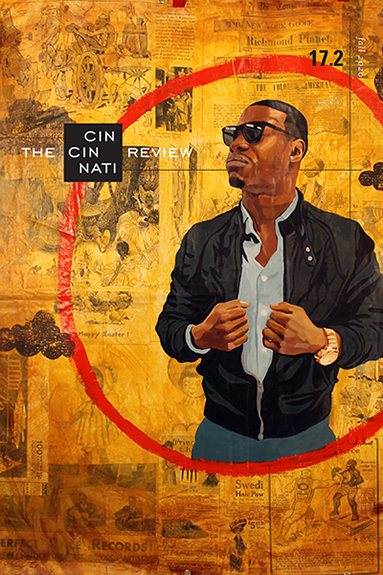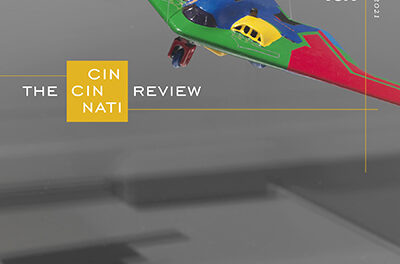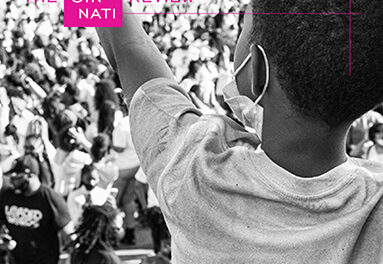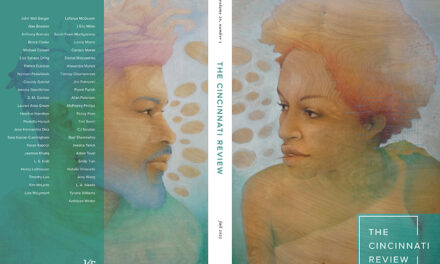My parents have lived in the same house for most of my life. Father selected the house because of the citrus trees and large driveway. It seemed to him like a place where no one would bother him about all the cars and car parts that he worked on. I grew up with the smell of oil and fumes of auto-body paint, the sound of painter’s tape being ripped off and hum of a compressor. Father’s hands are stained, the tip of a finger is missing. The tip of the finger lost under the weight of an engine. I have never known him to have this missing part of himself. When he was not working as a mail carrier, he was creating beauty. He speaks a language of suspension systems, rims, and engines. When I was a child, he painted a Mustang candy-apple red, and I wanted to run my tongue against the curve of the slick red fender.
It was others, people from outside my neighborhood, who taught me to be ashamed of where I grew up. They taught it to me through their words and the distaste in their voice when they talked about the local shops, schools, and people. The way some people turn the name, San Bernardino, into San Bernarghetto.
There is nothing here for you.
This was never said to me, but I’ve heard it said many times to family members and friends.
Look at any comment section for an article or YouTube video about San Bernardino. They say it is a festering cancer. They say, San Bernardino has always been a shithole. They say, There is no saving San Bernardino. They say, Downtown is a ghost town. A shell of what it once was. They say, I’m working on getting my family out of here. They say, I left San Bernardino twenty-six years ago, and I am glad I did. God bless everyone there. . . . Just leave.
There was a time I too thought I wanted a fresh start, that it would be easy to forget. But I keep coming back.
Brother was proud of this place, of our street. One of his first tattoos was of the street sign. I think he saw our city the way he saw an old or broken car. He was usually full of optimism and could see beyond the damage and imagine the possibilities. He felt at ease here, a place filled with stories of his youth. As youth, he and his friends would send out high-pitched whistles to alert each other as to their whereabouts on the block. Someone dubbed them the “10th street boys.” It was a name they wore with pride, saying they didn’t need a gang because they had each other.
Father and Mother have two children together. Brother and I are four years apart. Mother wanted only one child. She was one of eight children and grew up watching the toll that mothering took on her mother, and she wanted none of it. I was a difficult birth, but not a difficult child. This eased the way for Mother’s agreement for a second child. But it is hardly ever just us. Sometimes cousins live with us, or they move in across the street. Other times Mother’s eldest brother lives with us, or another uncle.
In school we learn about the San Andreas fault line. How it runs down the base of the San Bernardino Mountains. How it forms the boundary between the Pacific and North American plates. We learn to duck and cover and stand in doorways. We are told to keep supplies at home. Put a pair of shoes near your bed. If I had a map of California, I could trace the length of the fault. It begins in the interior of Southern California, at the Salton Sea, Cahuilla territory, where my paternal grandparents would go to get away from the city. It extends across the northern part of San Bernardino, near where I went to high school for a special honors program. It cuts across the bottom of the San Bernardino mountains, Yuhaviatam (Serrano) territory: the mountains where Father took us fishing. It passes through the city, close to the community college, which was once Politana. The fault line continues on upward through Tongva homelands (Los Angeles) and through the state until it lands in the Pacific Ocean.
School teaches me it is the motion of these plates that causes earthquakes. But there are other stories that attempt to explain the way the earth moves, this expression of energy. One involves several turtles, and another, a man growling. These stories are also ways of knowing and understanding.
The region is also intersected by the San Jacinto and Cucamonga fault zones. This is a place with a long history of people converging, so it makes sense to me that it is also a place where tectonic plates meet. Due to a lack of resources, many of the buildings in San Bernardino have not been retrofitted to withstand a major earthquake. In a Los Angeles Times article about the issue, the owner of a downtown restaurant says, “If you’re gonna die, you’re gonna die. Maybe it’s cancer, maybe it’s an earthquake.” This is what San Bernardino has been trying to teach me my whole life.
In elementary school I watch a hill by my school burn. I tested well, so Mother worked to get me into a magnet school in the north part of the city. She tells me, This is a good school; teachers send their own children here. There are no hills to burn in my neighborhood, but I take the smell of smoke with me when I return home. Sometimes when there is a fire in the mountains, it skips down into the north part of the city. This is what happened in 2003 with the Old Fire.
The Old Fire was started by arson and caused a billion dollars of damage and the deaths of six people. It was fanned by the Santa Ana winds. In Southern California there is always talk about these hot, dry winds. They have been called “devil winds.” I’ve also heard that they come from the mouths of the spirits. In 2003 they whip and turn, sending embers into a whirl. They catch on to the dry trees, and then soon another house is on fire. That year comes to be known as the “fire siege.” I stay at home, watching the news and the smoke as it makes its way to our neighborhood. In the center of the city we are safe from the fires, but ash sweeps into our house. By this time Brother has started his towing business. His friends call for help. They want him to tow their classic cars—their tricked-out lowriders—to safety. These vintage cars with their custom paint jobs, expensive rims, and hydraulics or air-bag systems that lift and lower the cars can be worth as much as a new car or more. The flames come quicker. His phone rings and rings. There is more smoke, and Brother has asthma. Mother wants him to wear a mask. He makes do and wears a painting mask. Brother comes back when the streets are blocked. He tells me that closer to the fires, people are sitting on their roofs watching the north part of our city burn. It takes years for some houses to be rebuilt; they stand out like missing teeth.
. . .










